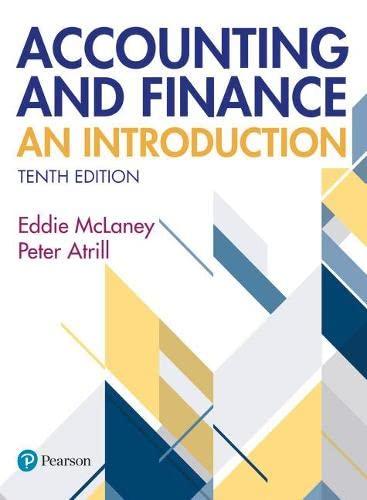Answered step by step
Verified Expert Solution
Question
1 Approved Answer
Please Solve all questions and explain how you got to the answer, thank you! Case #2 UOT Printing provides printing services to many different corporate

Please Solve all questions and explain how you got to the answer, thank you!
Case #2 UOT Printing provides printing services to many different corporate clients. UOT bids on print jobs, however the new ones, are negotiated on a cost-plus basis. Cost-plus means that the buyer is willing to pay the actual cost plus a return (profit) on product costs to UOT. (Cost-plus means if the total Job cost were $5.00 at 30% cost-plus, the selling price would be $6.50 with $1.50 as profits to UOT) Alissa Shah, controller for UOT, has recently returned from a meeting where UOT's president stated that he wanted her to find a way to charge most of the company's costs to projects that are on a cost-plus basis. The president noted that the company needed more profits to meet its stated goals this period. By charging more costs to the cost-plus projects and therefore fewer costs to the recurring set price jobs, the company should be able to increase its profits for the current year. Alissa knew why the president wanted to take this action. Rumours were that he was looking for a new job with another company and, if the company reported strong profits, the president's opportunities would be better for his new position. Alissa also recognized that she could probably increase the cost of certain jobs by changing the activity basis used to allocate the manufacturing overhead. The current cost base used to allocate manufacturing overhead was using direct labour hours. UOT current revenue streams are made up of 75% new bids and 25% recurring contract jobs with set pricing. This is based on 500 jobs completed in the year. Using the cost information in Exhibit 1 answer the following question. 1) What allocation base could Alissa use to achieve the president's request? (Hint: calculate the predetermined overhead rates for the current allocation and your purposed allocation(s) using the different activity base. Include of possible options before deciding) 2) Quantify the difference between using direct labour hours to allocate manufacturing overhead and your selected allocation base in question 1) per job on average. 3) Does this affect the overall cost for UOT -Explain? How much would total revenue increase based on the purposed changes? 4) Discuss the ethical implications. If you were Alissa what would you doStep by Step Solution
There are 3 Steps involved in it
Step: 1

Get Instant Access to Expert-Tailored Solutions
See step-by-step solutions with expert insights and AI powered tools for academic success
Step: 2

Step: 3

Ace Your Homework with AI
Get the answers you need in no time with our AI-driven, step-by-step assistance
Get Started


